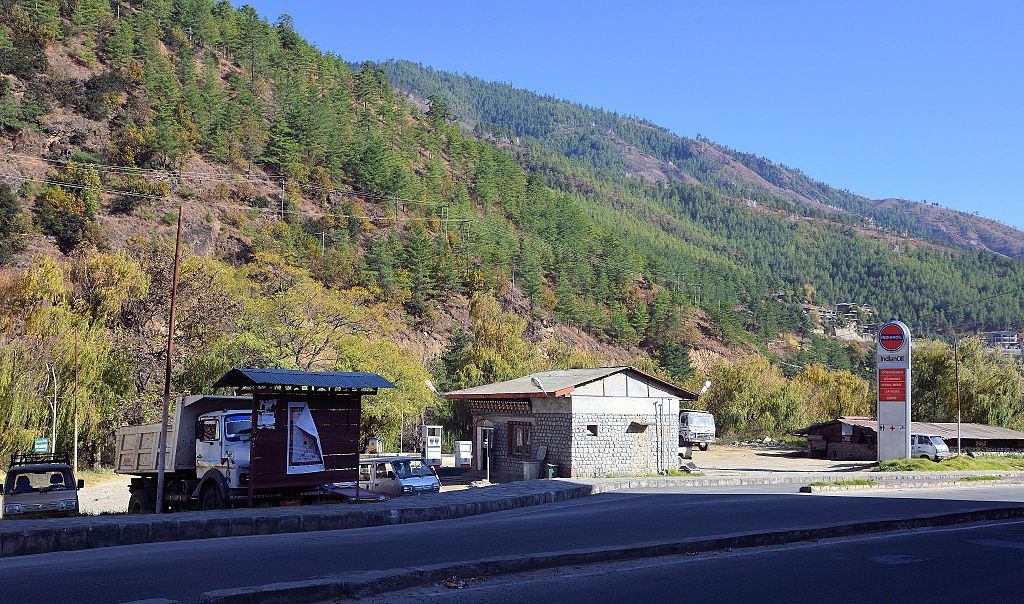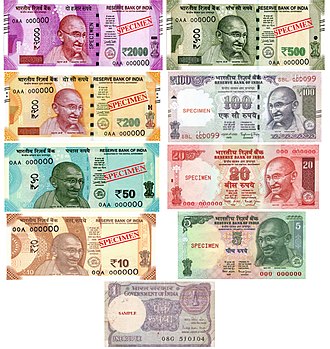It is an issue of international border. Despite not being illegal in the eyes of law, it is eating up mammoth amount of government revenue. The loss is going up every day with steady upward journey of oil price in India. Petroleum dealers in Bengal now want Government of India to take up the matter with Bhutan for a resolution.
The issue has its root in on NH31, popularly referred as Assam Road that connects India’s North East region with rest of the country while traversing through extreme northern part of West Bengal(WB) in East-West direction. At places, it comes closer than even 10 km from Indo-Bhutan border.
Priced at Rs. 64 and Rs. 72 a liter in Bhutan, diesel and petrol both are now cheaper by Rs. 12 a liter there compared to pumps in WB. The difference is also steadily increasing as Bhutan does not change oil price every day. Almost all Indian vehicles, travelling through NH31, run a few km extra to get into Bhutan to refill instead of refilling at Indian pumps,” said S. Palchoudhury, President, North Bengal Petrol Dealers Association(NBPDA).
Under Indo-Bhutan friendship treaty, no visa is needed to cross the border. Moreover, Indian currency, an official tender within Bhutan, always carries same value as Bhutan currency Ngultrum. “Thus, this easy refilling from Bhutan is not illegal. But causing revenue and sales loss for us,” said a senior oil dealer in Hasimara an Indo-Bhutan border town in India.
As NBPDA estimation goes, near 150 outlets on NH31 are losing around 20% of their total sales. The estimated loss is around 250 kiloliter (KL) of diesel and 135(KL) petrol per day. “With state Govt. revenue component of around Rs 10 per liter of diesel and Rs. 16 for petrol, annual loss is Rs. 176 crore while our sales loss is Rs. 750 crore. Centre is also losing revenue,” said Palchoudhury.
“Introduce fuel log card for vehicles entering into Bhutan can be a solution. In that, Bhutan pumps will write refill volume for Indian authority at border to charge revenue based upon that. A share of this collection can be passed on to Bhutan pumps as reward for this support. By equalizing net price in both sides, this system can save our sales as well as Govt. revenue. We are preparing a proposal in that line,” he said. (Source: ET)
Economy
INR Vs USD: The fall in Indian currency was due to strong US dollar demand amid growing concerns over widening trade deficit.
The Indian rupee slipped 26 paise to close below the 70-mark for the first time, reported news agency Press Trust of India (PTI). The fall in Indian currency was due to strong US dollar demand amid growing concerns over widening trade deficit. The Indian rupee collapsed to a historic intra-day trading low of 70.40 before closing at fresh life-time low of 70.15 per dollar, down by 26 paise or 0.37 per cent over the previous close, PTI further said. According to traders, Reserve Bank of India (RBI) intervened in the currency market to save the beleaguered currency.
Here are 10 things to know about Indian rupee’s movement today:
1. According to forex dealers, besides strong demand for the American currency from importers, capital outflows mainly weighed on the domestic currency.
2. A sharp surge in trade deficit too impacted the Indian rupee today. Trade deficit soared to a near five-year high of $18 billion, data released by the commerce ministry on Tuesday showed.
4. Depreciation of the Turkish lira against the dollar after the US imposed tariffs on steel and aluminium imports also put pressure on the Indian rupee today.
5. The Indian currency has lost 10.5 per cent of its value this year so far against the backdrop of country’s ballooning fiscal deficit and surging crude prices and mounting worries surrounding the US-China trade conflicts.
6. The rupee has been one of the worst performing currencies among peers this year – raising fears of a repeat of the currency crisis of 2013.
7. Officials said that country’s crude oil import bill is likely to jump by about $26 billion in 2018-19 due to the rupee’s fall, which could fan inflation worries.
8. Finance Minister Arun Jaitley on Wednesday said that foreign exchange reserves are comfortable by global standards and sufficient to mitigate any undue volatility in the foreign exchange market.
10. Domestic stock markets closed Thursday’s session on a negative note. The S&P BSE Sensex tanked 188.44 points, or 0.50 per cent, to end at 37,663.56. The NSE’s Nifty50 index tripped 50.05 points or 0.44 per cent to settle at 11,385.05. (With agencies inputs)
The Indian rupee slipped 26 paise to close below the 70-mark for the first time, reported news agency Press Trust of India (PTI). The fall in Indian currency was due to strong US dollar demand amid growing concerns over widening trade deficit. The Indian rupee collapsed to a historic intra-day trading low of 70.40 before closing at fresh life-time low of 70.15 per dollar, down by 26 paise or 0.37 per cent over the previous close, PTI further said. According to traders, Reserve Bank of India (RBI) intervened in the currency market to save the beleaguered currency.
Here are 10 things to know about Indian rupee’s movement today:
1. According to forex dealers, besides strong demand for the American currency from importers, capital outflows mainly weighed on the domestic currency.
2. A sharp surge in trade deficit too impacted the Indian rupee today. Trade deficit soared to a near five-year high of $18 billion, data released by the commerce ministry on Tuesday showed.
4. Depreciation of the Turkish lira against the dollar after the US imposed tariffs on steel and aluminium imports also put pressure on the Indian rupee today.
5. The Indian currency has lost 10.5 per cent of its value this year so far against the backdrop of country’s ballooning fiscal deficit and surging crude prices and mounting worries surrounding the US-China trade conflicts.
6. The rupee has been one of the worst performing currencies among peers this year – raising fears of a repeat of the currency crisis of 2013.
7. Officials said that country’s crude oil import bill is likely to jump by about $26 billion in 2018-19 due to the rupee’s fall, which could fan inflation worries.
8. Finance Minister Arun Jaitley on Wednesday said that foreign exchange reserves are comfortable by global standards and sufficient to mitigate any undue volatility in the foreign exchange market.
9. Meanwhile, foreign institutional investors (FIIs) sold shares worth a net of Rs. 378.84 crore on Tuesday, as per provisional data. 1 COMMENT
10. Domestic stock markets closed Thursday’s session on a negative note. The S&P BSE Sensex tanked 188.44 points, or 0.50 per cent, to end at 37,663.56. The NSE’s Nifty50 index tripped 50.05 points or 0.44 per cent to settle at 11,385.05. (With agencies inputs)
The Indian rupee slipped 26 paise to close below the 70-mark for the first time, reported news agency Press Trust of India (PTI). The fall in Indian currency was due to strong US dollar demand amid growing concerns over widening trade deficit. The Indian rupee collapsed to a historic intra-day trading low of 70.40 before closing at fresh life-time low of 70.15 per dollar, down by 26 paise or 0.37 per cent over the previous close, PTI further said. According to traders, Reserve Bank of India (RBI) intervened in the currency market to save the beleaguered currency.
Here are 10 things to know about Indian rupee’s movement today:
1. According to forex dealers, besides strong demand for the American currency from importers, capital outflows mainly weighed on the domestic currency.
2. A sharp surge in trade deficit too impacted the Indian rupee today. Trade deficit soared to a near five-year high of $18 billion, data released by the commerce ministry on Tuesday showed.
4. Depreciation of the Turkish lira against the dollar after the US imposed tariffs on steel and aluminium imports also put pressure on the Indian rupee today.
5. The Indian currency has lost 10.5 per cent of its value this year so far against the backdrop of country’s ballooning fiscal deficit and surging crude prices and mounting worries surrounding the US-China trade conflicts.
6. The rupee has been one of the worst performing currencies among peers this year – raising fears of a repeat of the currency crisis of 2013.
7. Officials said that country’s crude oil import bill is likely to jump by about $26 billion in 2018-19 due to the rupee’s fall, which could fan inflation worries.
8. Finance Minister Arun Jaitley on Wednesday said that foreign exchange reserves are comfortable by global standards and sufficient to mitigate any undue volatility in the foreign exchange market.
9. Meanwhile, foreign institutional investors (FIIs) sold shares worth a net of Rs. 378.84 crore on Tuesday, as per provisional data. 1 COMMENT
10. Domestic stock markets closed Thursday’s session on a negative note. The S&P BSE Sensex tanked 188.44 points, or 0.50 per cent, to end at 37,663.56. The NSE’s Nifty50 index tripped 50.05 points or 0.44 per cent to settle at 11,385.05. (With agencies inputs)


